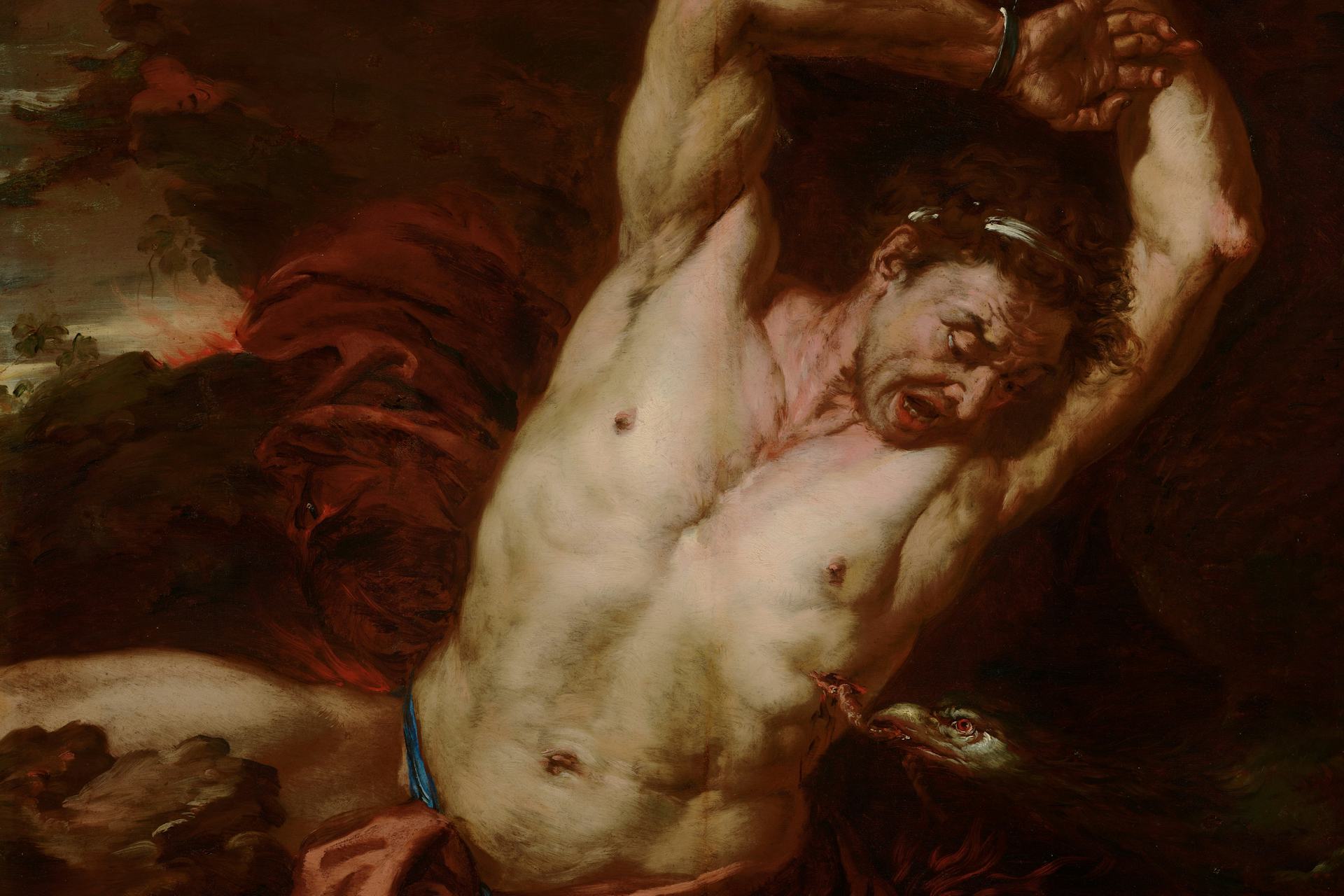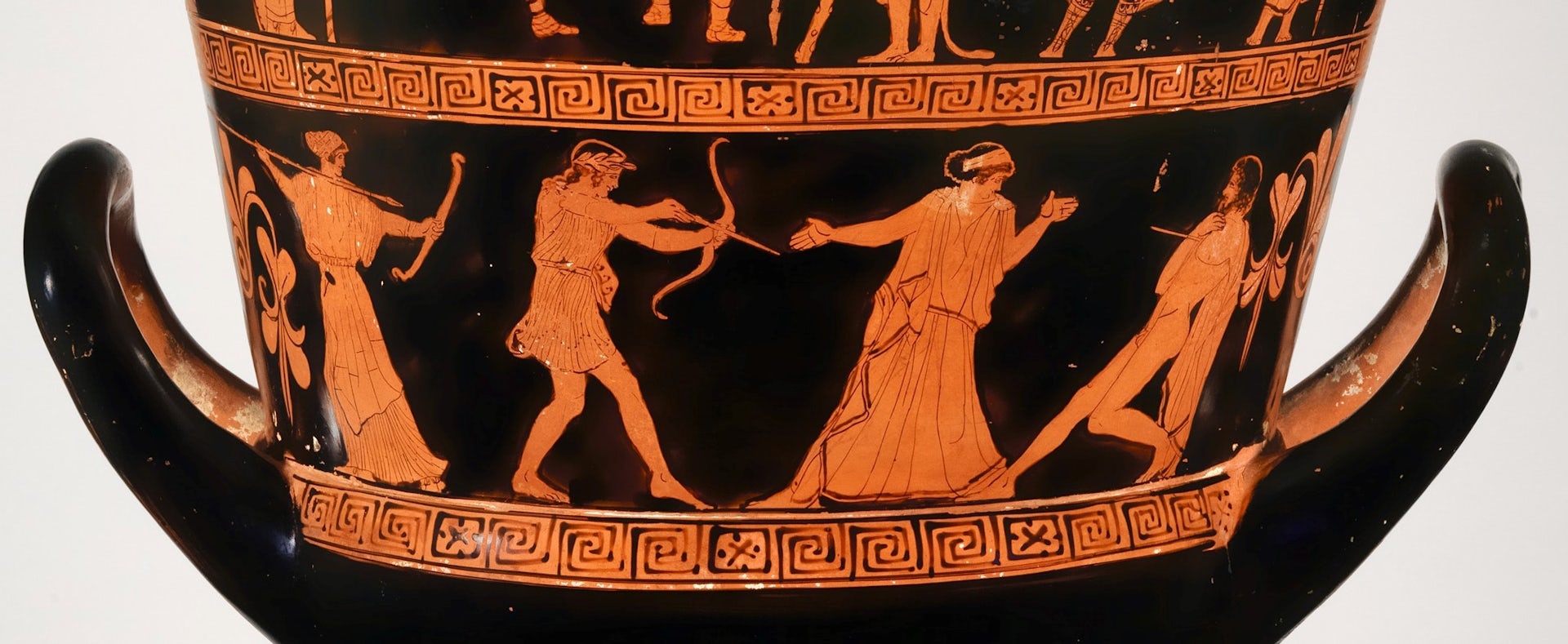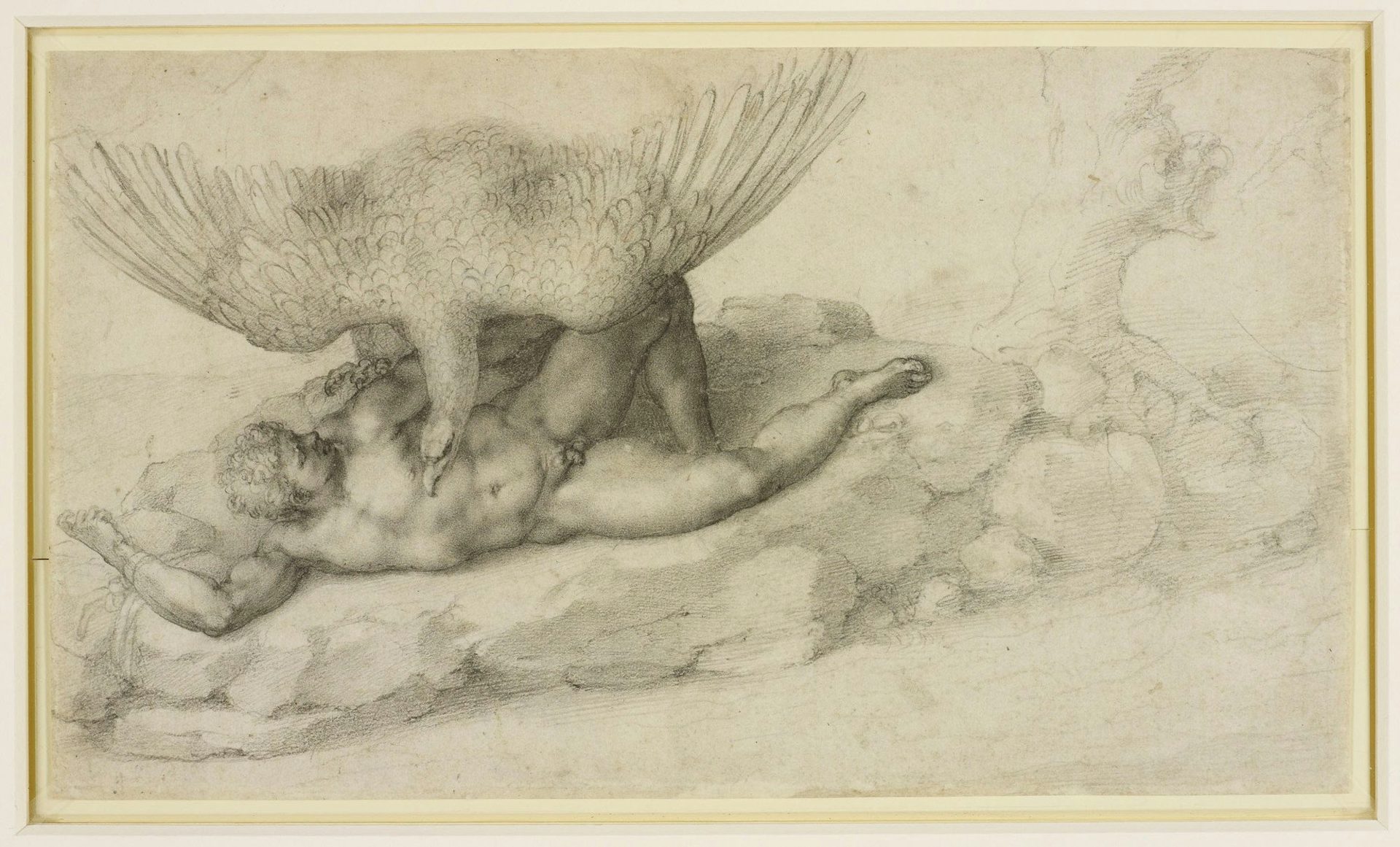Tityus

Tityus by Giovan Battista Langetti (ca. 1660–1665)
Mauritshuis, The HaguePublic DomainOverview
Tityus, son of Zeus and Elara, was a brutish man of enormous size and strength. He is best remembered for trying to rape Leto, one of Zeus’ lovers and the mother of the gods Apollo and Artemis. For this crime, Tityus was slain by either Artemis, Apollo, or both.
He was then cast into Tartarus, where his sins earned him a terrible punishment, alongside the likes of Tantalus, Sisyphus, and Ixion: Tityus was stretched out and had his innards perpetually torn out by a pair of vultures (or, in some traditions, a snake).
Etymology
There are several possible etymologies for the name “Tityus” (Greek Τιτυός, translit. Tityós). It may be related to the Greek verb τείνω (teínō), meaning “to stretch,” itself derived from the Indo-European *ten(h₂)-, also meaning “to draw, stretch.”
In this case, Tityus’ name would mean something like “the outstretched one”—presumably a reference to his mythological punishment in the Underworld (where he was doomed to forever lie outstretched as his innards were devoured by birds or snakes).
Alternatively, the name “Tityus” might be derived from the Indo-European *teuh₂-, meaning “to swell.” This would make Tityus “the swollen one,” perhaps another way of saying “the powerful one.”
Finally, the name could also be connected with words that denote punishment, such as τίνω (tínō)—“to pay, atone”—and τίσις (tísis)—“penalty.”
Pronunciation
English
Greek
Tityus Τιτυός (Tityós) Phonetic
IPA
[TIT-ee-uhs] /ˈtɪt i əs/
Attributes
Tityus’ defining attributes were his enormous size and strength. According to Homer, his massive body lay stretched in Tartarus across a span of nine plethra—roughly 900 feet![1]
Though he was giant, Tityus was not usually regarded as one of the Giants, the race of earth-born monsters who tried to overthrow the Olympians. Even so, many Roman poets referred to Tityus (somewhat inaccurately) as a Giant, and he is still often thought of as a “Giant” today.[2]
Iconography
Tityus was a popular subject in ancient art, especially in early Greek vase paintings. He also featured in Etruscan and Roman art, including sculptural reliefs and wall paintings.
In both art and literature, Tityus was represented as overwhelmingly large and strong. His wildness was often highlighted by his unkempt hair or the animal skins he wore. When artists depicted Tityus, they typically showed him abducting Leto; sometimes Apollo and Artemis were also shown coming to their mother’s rescue or striking Tityus down.[3]
The famous artist Polygnotus was known to have depicted Tityus’ sufferings in Tartarus in an important painting (now lost). According to Pausanias, Polygnotus represented Tityus worn away to a shadow, no longer even being torn apart by vultures.[4]

Attic red-figure calyx-krater by the Nekyia Painter (ca. 450–440 BCE) showing Artemis (far left) and Apollo (center left) killing Tityus (far right) as Leto stands by (center right)
The Metropolitan Museum of ArtPublic DomainFamily
According to the earliest sources, Tityus was a son of Gaia, the primordial goddess of the earth.[5] But in a better-known account, he was the son of Zeus and a mortal woman named Elara (or Alera), the daughter of Orchomenus.[6] Some sources combined these two traditions of Tityus’ parentage, claiming that Elara gave birth to Tityus while buried beneath the earth.
According to Pindar, Tityus was the father of Europa, who later became a lover of Poseidon and the mother of the hero Euphemus.[7]
Mythology
Origins
Tityus was born from an affair between Zeus and a mortal woman named Elara. Not wanting his wife Hera to discover his dalliance, Zeus concealed the pregnant Elara underneath the earth. In some traditions, Elara gave birth to Tityus while still buried alive; in others, she died beneath the earth, and it was Gaia—the divine embodiment of the earth—who brought Elara’s pregnancy to term.[8]
In either case, Tityus was born from the earth and was thus sometimes called “earth-born” (gegenes) or “son of Gaia.”[9]
Tityus and Leto
Tityus is best known for his attempt to violate the Titan Leto, mother of Apollo and Artemis. In the most familiar account, Tityus spotted Leto as she was traveling to Delphi, where her son Apollo had established an oracle.[10] But according to the Roman mythographer Hyginus, Hera was the one who sent Tityus to attack Leto, wishing to punish her for her affair with Zeus.[11]
Overcome by lust, Tityus attacked Leto in Panopeus, a town not far from Delphi, and tried to carry her off. Ancient sources agree that he was immediately killed for this impudence, though there are several different accounts of who killed him:
In one version, Tityus was shot dead by Artemis, who sprang to her mother’s defense.[12]
In another version, it was Artemis’ twin brother Apollo who killed Tityus.[13]
In yet another version, Artemis and Apollo killed Tityus together.[14]
In one late version, reported by Hyginus, Zeus was the one who killed Tityus, striking him down with one of his lightning bolts.[15]
Tityus in Tartarus
The slain Tityus was cast into Tartarus, where he joined other mythological sinners such as Sisyphus, Tantalus, and Ixion in eternal suffering.[16] He lay outstretched while either one or two vultures (or a serpent) pecked at his liver or heart, unable to fend off the terrible creatures that plagued him.[17]

The Punishment of Tityus by Michelangelo (ca. 1533)
Royal Library, WindsorPublic DomainOther Myths
Homer makes a reference to one further myth in which the Cretan Rhadamanthys came to visit Tityus on the island of Euboea.[18] The purpose of this visit, and the nature of the relationship between Tityus and Rhadamanthys, remains unclear, but the myth suggests some connection between Tityus and Euboea.[19]
Worship
There was a tomb of Tityus at Panopeus, the site (not far from Delphi) where Tityus was killed while trying to rape Leto. This tomb was a mound with a circumference of some 200 feet.[20] The presence of such a tomb suggests the existence of some kind of local cult that honored Tityus. Tityus also had a heroon (a hero shrine) where he was worshipped.[21]
On the island of Euboea, there was a cave called the “Elarium,” named for Tityus’ mother Elara.
Popular Culture
Though Tityus is not as well known as the Greek gods, he has continued to resurface in Western culture, appearing, for instance, in Dante’s Inferno. Tityus sometimes also appears in modern pop culture: the “Tomb of Tityus,” for instance, is a location in the video game Assassin’s Creed: Odyssey that features a huge broken statue of Tityus being tormented by vultures.